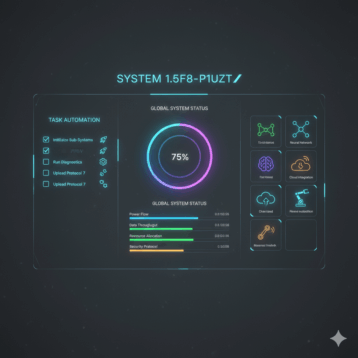
By 2021, more than 90% of compute instances and workloads will be processed using cloud data centers. There’s no doubt that cloud computing has already started taking the world by storm.
While the principle behind the cloud isn’t new, it’s important to understand cloud computing concepts and terminology now that more and more businesses and companies switch to cloud services.
The Cloud: What Is It?
Cloud computing is something that people always hear about, but what does the cloud really means? It can be a nebulous and intimidating topic, especially for non-techies out there.
The cloud is basically the Internet. Cloud computing describes services and software that are running through the Internet. These services and software work through the cloud rather than on hard drives or private servers.
How Cloud Computing Works
Traditional IT hosting services and cloud computing differ from each other. That’s because the organization, business, or individual user (the consumer) generally doesn’t own the infrastructure that’s needed for supporting the applications and programs they use. These elements are operated and owned by a third party instead. That means end users pay for the services they use.
Cloud Service Models
There are three primary service models in cloud solutions: SaaS or software as a service, PaaS or platform as a service, and IaaS or infrastructure as a service. Learn more about them below.
- SaaS
Of the different cloud service models available, cloud application services come as the most well-known. A third-party host, pack, and deliver the software through the Internet, which typically takes place on a browser-based interface. Enterprises can offload both maintenance and management costs to the vendor when the software application gets delivered over the Internet.
Customer relationship management (CRM) software and email are some of the popular SaaS options.
- PaaS
Platform as a service is primarily geared towards operations professionals and developers primarily. For users to complete the development and delivery of applications, service providers rent out platforms that are cloud-based. Simply saying, the building, customization, and deployment of applications become easier and more efficient with the help of the framework that PaaS provides.
- IaaS
Users can access computing resources, such as storage, networking, and servers, via the cloud through infrastructure as a service. IaaS provides environments that are automated and scalable even though users are still responsible for managing their middleware, data, applications, etc. These automated and scalable environments provide a high degree of flexibility and control for the user.
Google Compute Engine (GCE), Microsoft Azure, and Amazon Web Services (AWS) are some of the popular IaaS providers.
IaaS companies usually sign up to Microsoft’s Cloud Solutions Provider Programme and become a Microsoft CSP reseller to procure and resell cloud-based solutions. They can also provide customer support and billing to businesses.
Types Of Cloud Computing

To meet individual demands and provide favorable results, numerous types of cloud computing have emerged. That means cloud computing differs for everyone since not all of the clouds are identical.
Here are the different types of cloud computing:
- Private Cloud – IT services through a private network or the Internet are provided by a private cloud to select users only rather than to the public. That means a private cloud only has one tenant.
It’s possible for the private cloud to reside off-site or on-site. The single, private tenant who has greater control over the different IT services is the distinguishing feature. That’s why private clouds are also a popular choice for organizations with high priorities on compliance and security. Those who really want to ensure they’re meeting enterprise security requirements also opt to work with a cloud access security broker.
- Public Cloud – The cloud computing option that’s most commonly understood is the public cloud. It’s where all the supporting infrastructure and services are managed off-site and shared across multiple tenants or users over the Internet.
At the individual consumer level, streaming service Netflix is one good example of a public cloud. Users are able to get a subscription to the service through their personal accounts, but access similar services through the Internet across the platform.
The increased efficiency from shared resources and their subsequent cost-effectiveness are the advantages of using a public cloud. Compared to other types of cloud computing solutions, public clouds are typically cheaper because they’re relying on economies of scale.
- Hybrid Cloud – As the name suggests, hybrid cloud combines both public and private cloud elements to varying degrees. In a hybrid cloud environment, the clouds communicate over an encrypted connection despite operating independently. It results in applications and data portability.
Since a hybrid cloud environment allows users greater flexibility in meeting their IT needs, it’s increasingly becoming a popular cloud solution, too.
Benefits Of Cloud Computing
Below are the benefits that cloud computing brings to users:
- Mobile – When you manage your software and data on the cloud, employees can communicate with each other and access necessary information wherever and whenever they want using their Internet-connected devices, such as laptops and smartphones.
- Reliable – With fewer instances of service interruptions or downtime, a managed cloud platform is a much more reliable option than an in-house IT infrastructure. Also, most cloud computing service providers are offering over 99.9% availability and 24/7 support.
- Cost-Saving – Migrating to the cloud comes with attractive opportunities for cost savings and ROI. It’s true even if cloud computing’s initial price tag can give some organizations sticker shock. Operating on the cloud means you no longer will pay for services you’re not using, may it be bandwidth, storage, etc. With the cloud, you’ll be adopting a pay-as-you-go model instead.
Furthermore, smaller businesses not having the capital required for building out and managing their own IT infrastructures will find cloud solutions particularly affordable.
Final Thoughts
Cloud-based solutions open up golden opportunities for higher productivity and efficiency, as well as more remote work as everyone can access the same updated information at just the touch of a button. It has truly transformed from a promising innovation to an essential system for modern businesses.










